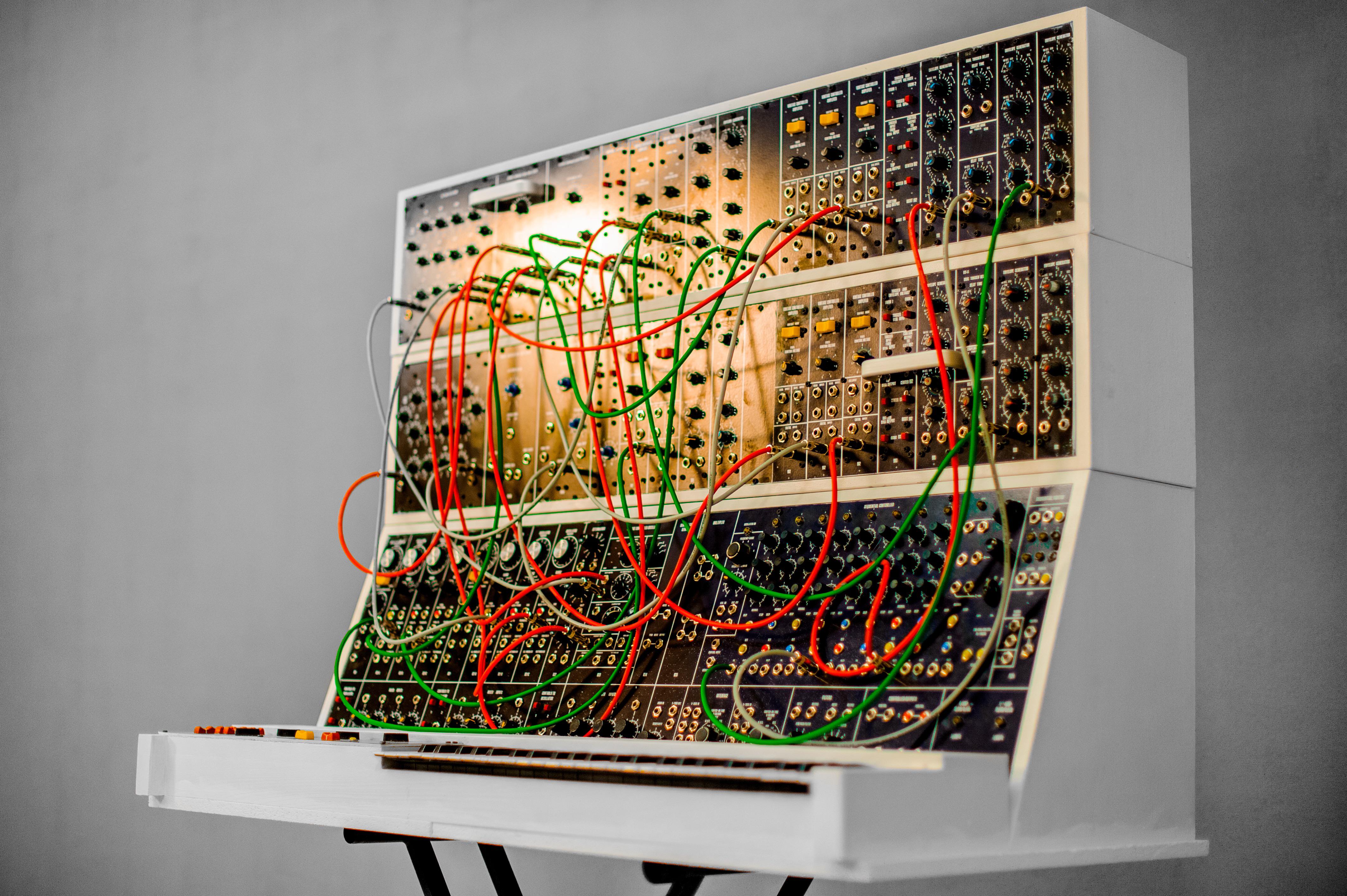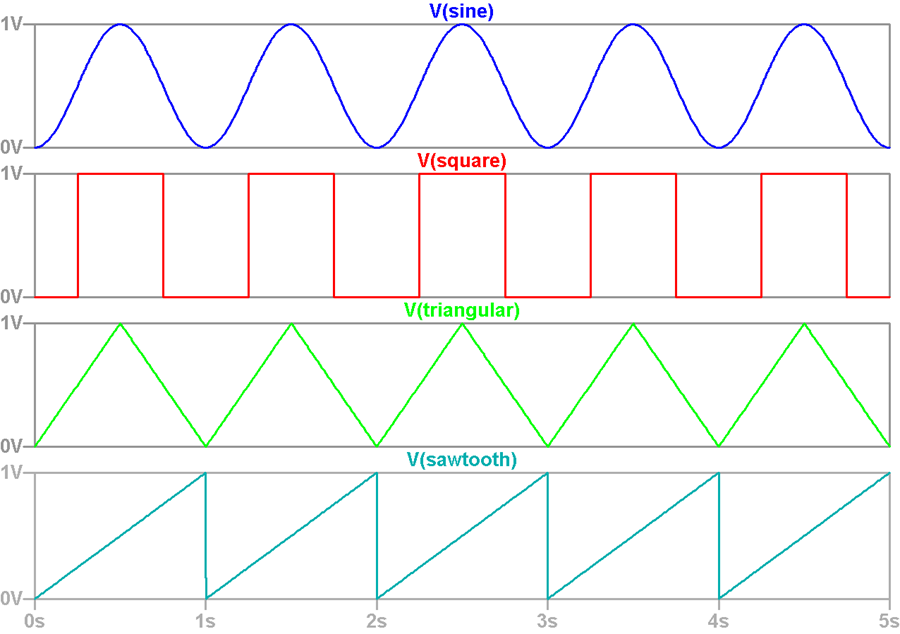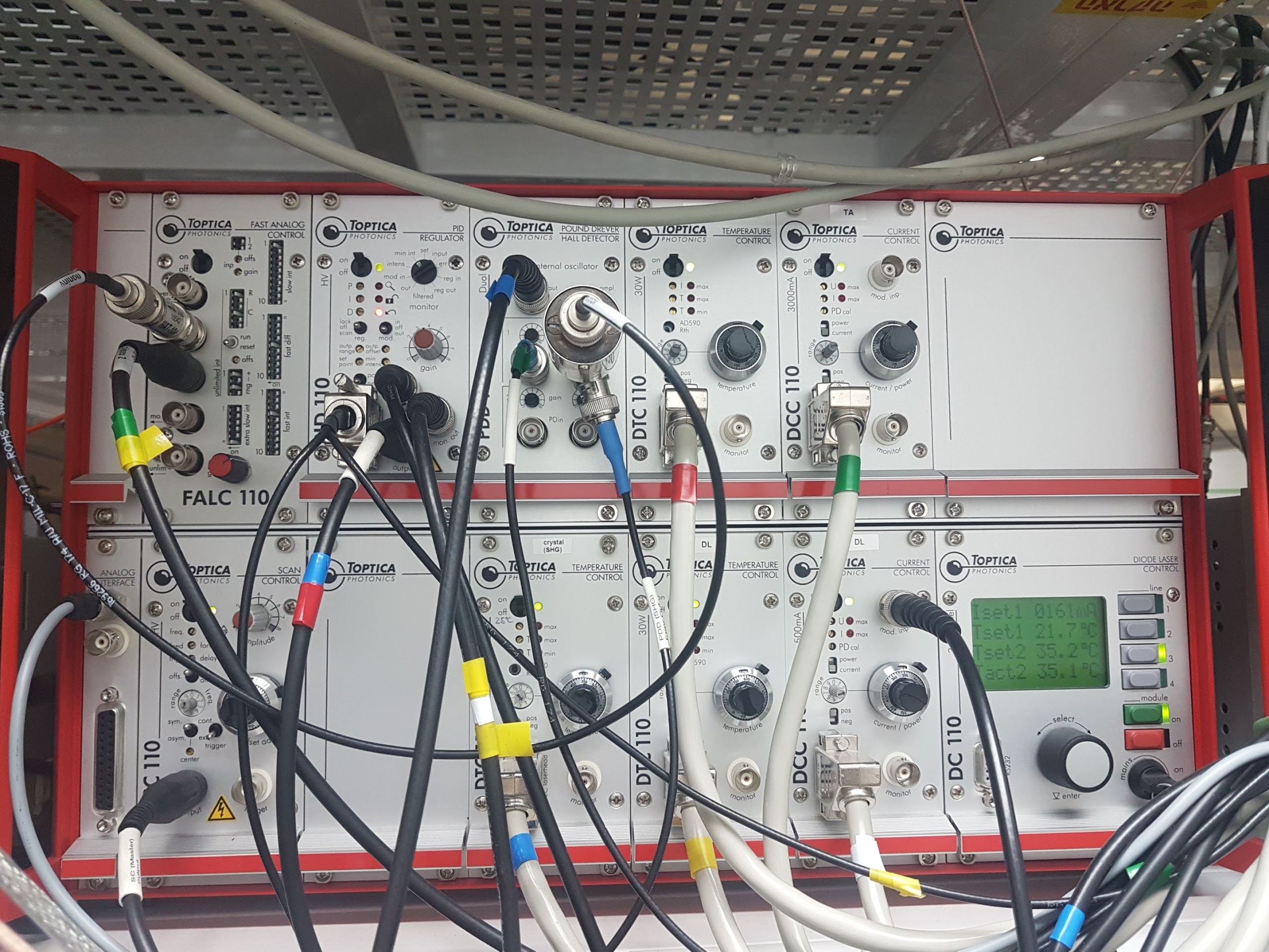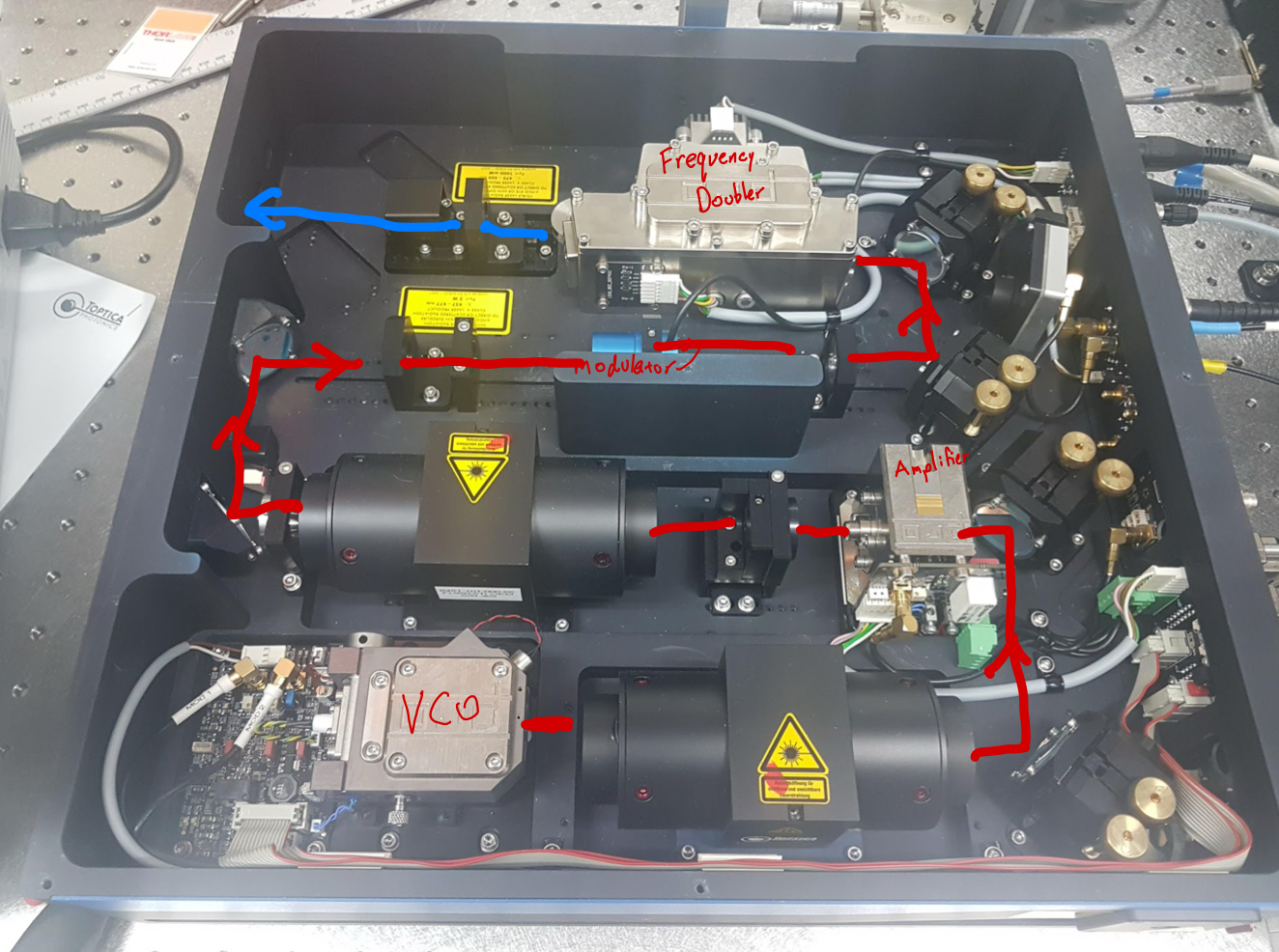I’m not a musician. I do enjoy listening to music very much and I tried picking up an instrument a few times. I never managed to keep at it for long enough to make anything you could call music. Being almost 40, it’s probably too late to really get into it in any serious way. However, I would say that at one point in my life I did play something that is a lot like an instrument: A laser. It turns out a laser is surprisingly similar to a unique electronic instrument called a modular synthesizer. Let me try and explain!
The analogy of musical instruments to lasers and also to other electronics equipment (Radio Frequency electronics are especially similar) is in my opinion a very strong one. The fundamental similarity is due to the fact they all manipulate oscillations. In music, the oscillations are of the air. In electronics, they are of electrons moving back and forth through conductors, and in a laser they are also related to the motion of electrons in the lasing medium, but those oscillations cause light to be emitted. It’s nice, to me, that the analogy reveals how there is as much of an art as there is a craft to the operation of these things. It’s not just the piano that requires an artistic flair, it’s the laser too.
Modular synths
A modular synth looks like a high school electronics project or a 1920s phone switch board. It is flashing LED lights and electrical wires and wiggly oscilloscope traces galore. It has a super appealing aesthetic that’s somehow from the future and past as the same time. Just look at this picture

It’s a real beauty. Looks very messy but as these things go, a trained eye can make sense in the mess. It’s essentially a large electrical circuit whose knobs control the sound. The output of the entire thing is then fed to speakers or into a recording setup (or a computer).
Subtractive synthesis
The way sound is generated here is by Subtractive synthesis. This technique was invented by Robert Moog, who founded the famous company by the same name. The synth in the image above is a Moog synthesizer. Subtractive synthesis basically means you start out with a tone and then shape it in different ways. There’s an amazing video by David Hilowitz that goes into detail in a fun and musical way. I highly recommend it. I’ll do my best to give the gist here.
The start of the generation chain is a Voltage Controlled Oscillator which outputs a signal with a sine, square wave, triangle or saw-tooth envelope, at a given frequency.

Different envelope shapes have a different spectral content and as a result have a different feel when perceived by the human ear and interpreted by the human brain. This is the first artistic choice the musician makes here. The VCO output can then be fed to additional modules. One example is the VCF, a voltage controlled filter.
The VCF is a circuit that can selectively remove frequencies from the input VCO signal. Its knobs are used to select which frequencies remain and which are removed, and kinda gives the subtractive technique its name. If you remove low frequencies, the bass notes, you remain with a higher pitch sound and if you remove the treble the overall feel is of a lower tone.
Additional shaping modules include the Envelope Generator, which can set the overall shape of the note that is being played. Although notes are mainly characterized by their central frequency (e.g. the note A aka “La” in the solfège system has the frequency 440 Hz) when you think of the different ways notes can be played on different instruments you realize they can produce sounds that linger or ones that end quickly. Sounds that begin explosively, or ones that slowly creep up. And sounds that end sharply or slowly die out. These parameters are apparent in the overall envelope as the Attack (how rapidly the notes starts), Sustain and Release parameters.
There are many more module types we can go into. For example a particularly interesting modules is called a ring modulator. This module mixes mixes frequencies together (adding or subtracting input signal frequencies to make new ones). This can, for example, make things sound very metallic with a fast “twang” that sounds like hitting a metal plate.
The space of possibilities is vast. As the true power comes from the fact sound manipulation can be composed together as the output of one module can be chained as the input to the next module. That’s the origin of the plug board appearance of the instrument and a big part of its overall appeal.
One final feature of the modular synthesizer I’d like to point out is the fact not only the sound signal is chained between the modules. Crucially, many of the control knobs that tweak the operation of modules can also be electrically controlled. A module called the Low Frequency Oscillator (LFO) generates a signal at a “low” frequency (here low means typically lower than the audio frequencies of hundreds to thousands of Hz) and that signal can be fed into the filters, amplifiers, envelope generators and so on. This is very useful in creating a dynamic feel to the whole musical piece that is hard to achieve manually.
A laser
This is a laser controller from my old lab at the Weizmann Institute. It actually controls a chain of lasers that start at an invisible infra-red and end with a very bright blue beam.

Like the modular synth, this controller also has discrete modules which are interconnected by electrical cables. The similarities are not just visual though! Many of the modules in this rack, for example the one labeled ״scan control" is similar to an LFO. It tweak the parameters of elements in the laser. Depending on what exactly it is connected to that can change the laser frequency (color), intensity or other things.
The laser instrument extends beyond just this box though. If we open the box from which light actually comes out we can see more similarities to the analog synth.

This is the inside of a blue laser from the German company Toptica. It’s a fairly fancy one that can generate an output of over 1 W of continuous and beautiful blue light that appears super bright to the human eye and can make you blind in an instant.
Light in this box starts its life in the bottom left corner, where I labeled the “VCO”. Like in the synth, you need to start with a waveform. Here that waveform is a very pure sine wave at many hundreds of Terahertz (we’re dealing with optical frequencies here, not audio but the idea is the same). Unlike the audio synth case, we can’t select a triangle wave here, just a sine. This VCO outputs an Infra-red invisible (but very powerful) laser. The blue light that comes out in the end will blind you, this infra-red will blind AND burn you.
If you follow my crudely drawn line you see it passing through a few components. The big black cylinder is an optical isolator. It acts like a electrical diode for light, allowing light to flow in one direction but not back to where it came from. This is needed to prevent the laser from reflecting back to its source and burning it like some freaky spiderling that eats their mother after hatching. After passing through the isolator and bouncing off mirrors, the powerful red light goes into a box labeled Amplifier. This increases the light intensity and is like a synth module we didn’t discuss but you can guess what it does - a voltage controlled amplifier.
From there the light goes through a small blue cylinder which has a crystal inside. This is an Electro Optical Modulator. The crystal can slightly (but quickly) change the color (frequency) of the light when it is acted on by an electrical signal. Again, this is very similar to what one would do in the analog synth, in one of the non-linear modules such as the ring modulator (non-linear means any change of frequency in the system, but especially when adding new frequencies).
Finally the light goes into the frequency doubler. This is a module that also manipulates frequency but in a much more dramatic way. It takes red light and doubles it frequency by converting pairs of red photons into a single blue photon. This is a process called second harmonic generation and is the end of this optical “musical composition” if all you wanted to do is to generate one beautiful note.
Playing a symphony
I missed one part out in this story. We don’t play a single note when playing music. And we don’t just lase willy-nilly without control when running a scientific experiment. So how is it that a modular synth, and a laser, can do complex things in time rather than just doing one thing? What is needed is a control system. For a synth there are parts that add memory and logic to the musical composition. Logic gates (AND, OR), Shift registers, Loopers and many more can be used to make a musical piece. In scientific experiments, depending on the experiment itself and how tightly its timing constraints are (do we need to control the lasers at 1s intervals? 1 micro-second? 1 nano-second?) the control system can become one of the most challenging parts of the entire experiment.
To finish this off, here’s piece by the YouTube creator, LOOK MUM NO COMPUTER. A real artist and a master of electronics who makes analog synths and many other things. I’ve been listening to this one endlessly. Enjoy.